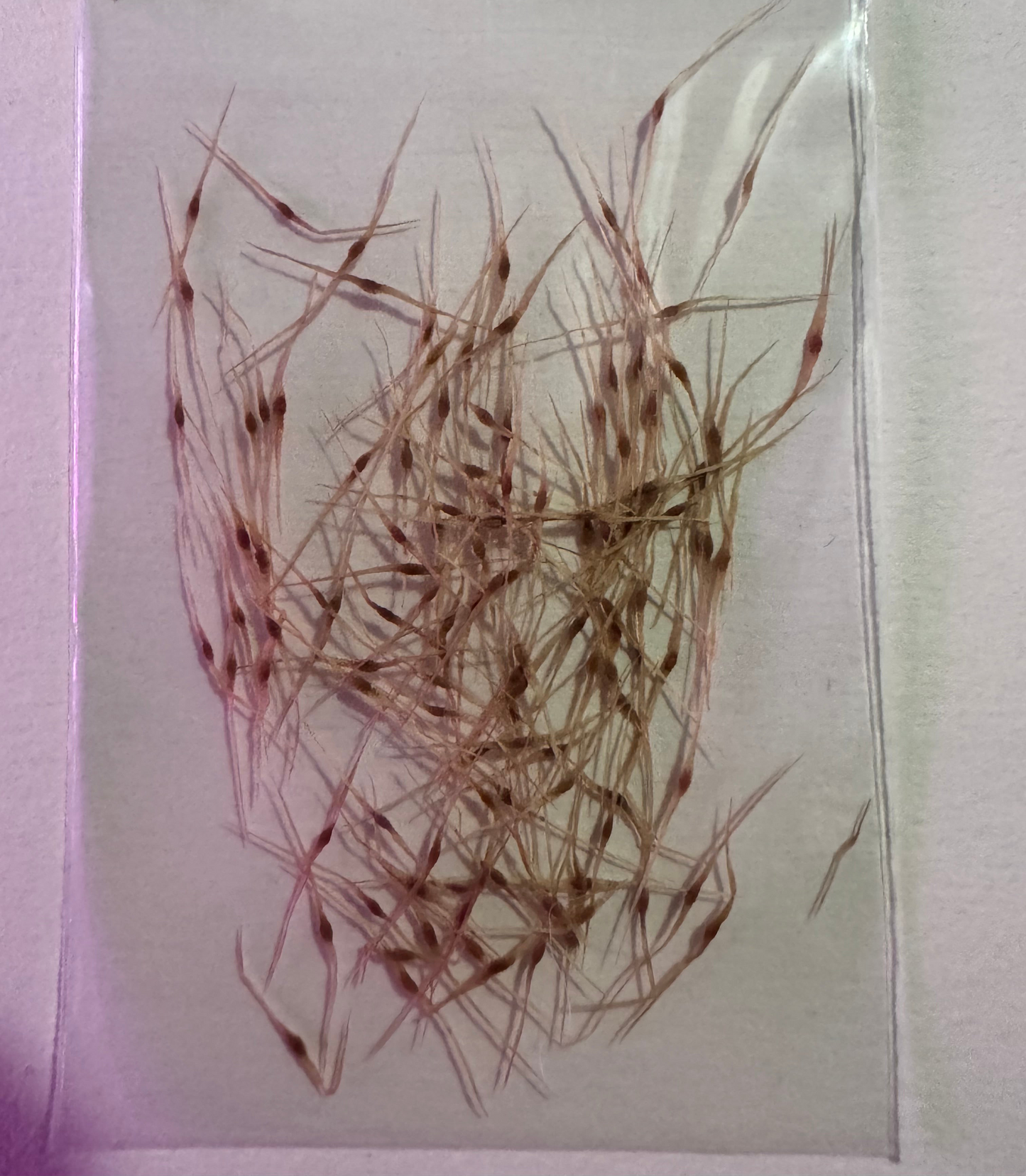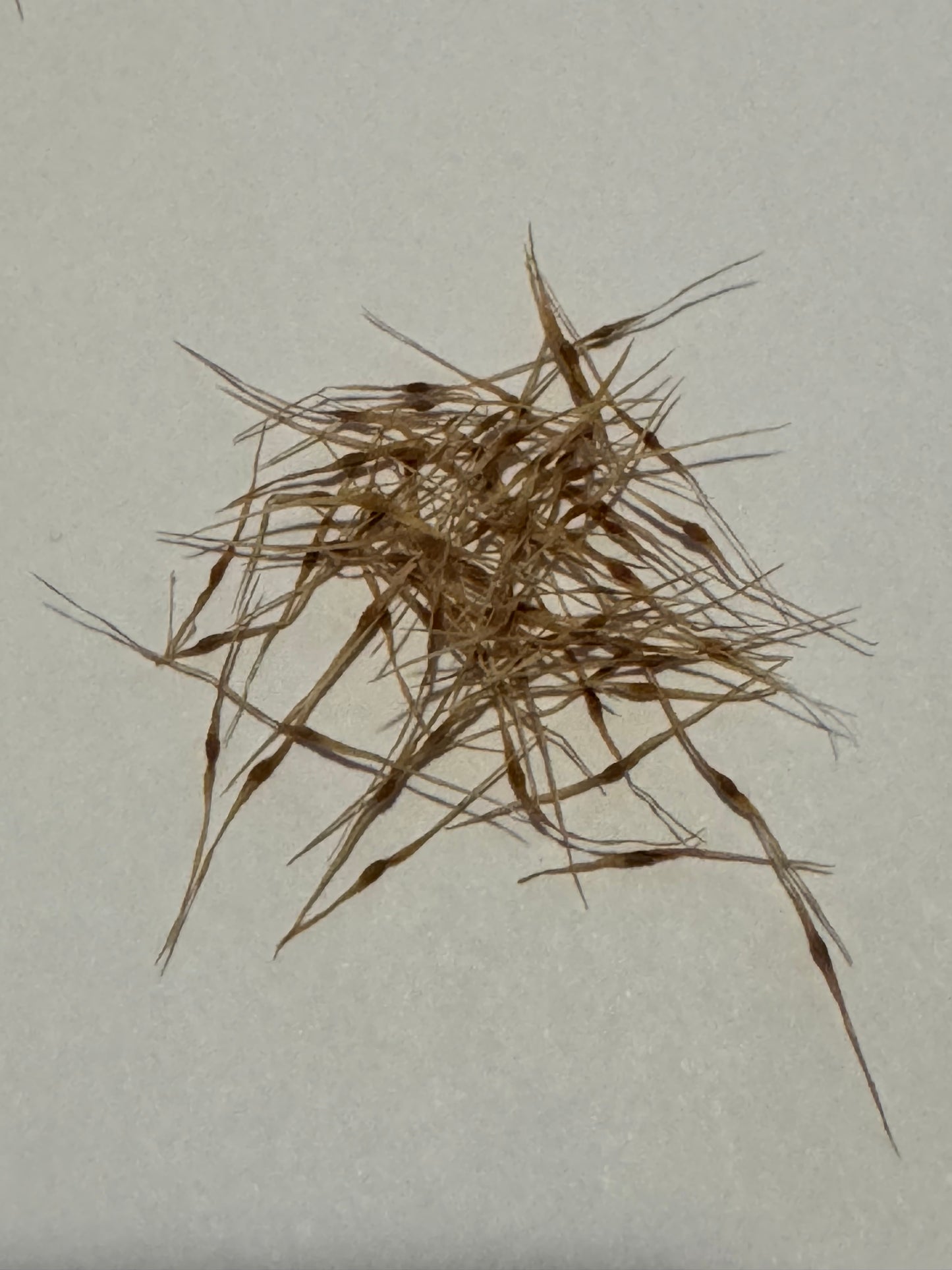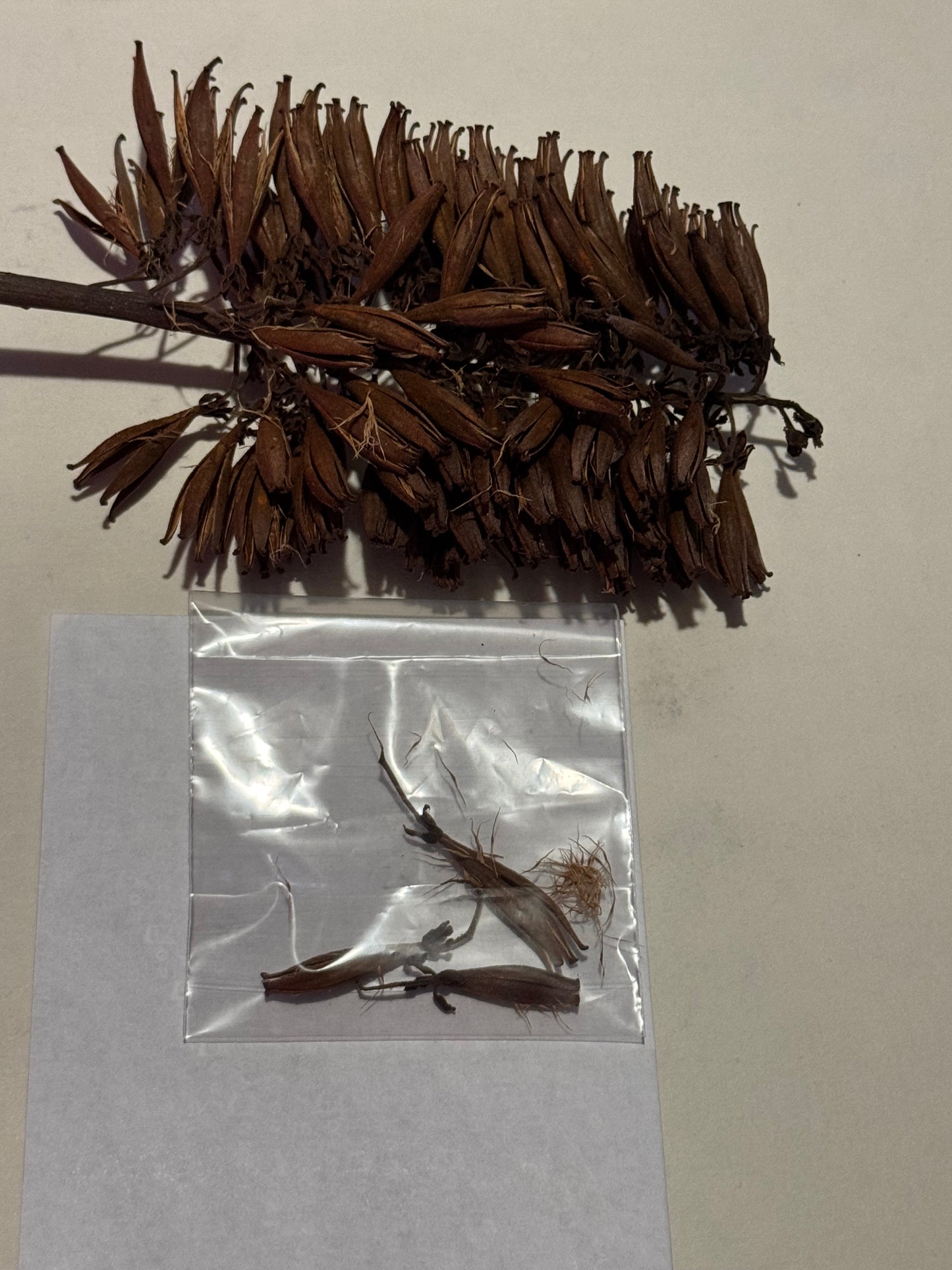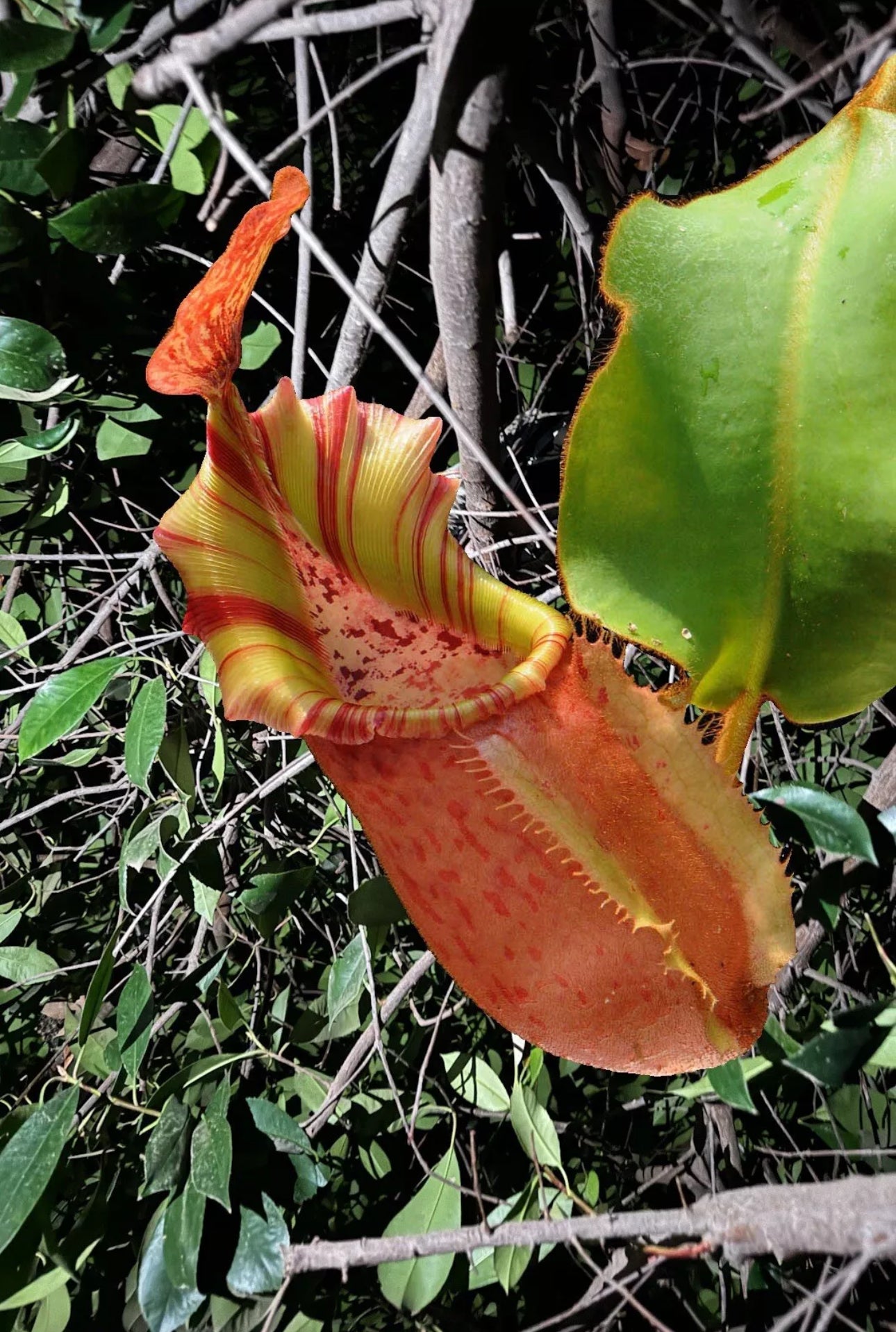1
/
of
4
The Nepenthes Seed Store
100 Nepenthes Veitchii Seeds Grown and Harvested in California USA
100 Nepenthes Veitchii Seeds Grown and Harvested in California USA
Regular price
$28.99 USD
Regular price
Sale price
$28.99 USD
Unit price
/
per
Couldn't load pickup availability
Contents - 100 Nepenthes Veitchii Seeds
Bonus Seeds +20 Random Nepenthes SeedS
Care Guide :
Nepenthes Veitchii is a tropical pitcher plant native to Borneo and surrounding regions. It thrives as an epiphyte or in soil and is adaptable to lowland and intermediate growing conditions.
1. Light Requirements
- Optimal Light: Bright, indirect sunlight. A few hours of direct morning or late afternoon sun are beneficial, but avoid harsh midday sun.
- Artificial Lighting: LED grow lights are a good option for indoor cultivation. Aim for 12–14 hours of light per day.
2. Temperature and Humidity
-
Temperature:
- Lowland varieties: Daytime 77–95°F (25–35°C), nighttime 65–75°F (18–24°C).
- Highland varieties (if applicable): Daytime 68–80°F (20–27°C), nighttime 50–60°F (10–15°C).
-
Humidity:
- Maintain at 60–80% relative humidity.
- Mist plants or use a humidifier if grown indoors.
3. Watering
- Use distilled, reverse osmosis (RO), or rainwater. Tap water with high mineral content can harm the plant.
- Keep the substrate consistently moist but not waterlogged.
- Never let the plant sit in standing water.
4. Soil and Potting
-
Preferred Substrate:
- A mix of sphagnum moss, perlite, and orchid bark (2:1:1 ratio) works well.
- For epiphytic growth, mount it on tree fern or use a loose medium in a hanging pot.
- Pot: Use a well-draining container. Hanging pots are ideal for showcasing its trailing growth habit.
5. Feeding
- Natural Feeding: Allow the plant to catch insects like flies, ants, or small crickets. Avoid overfeeding.
- Artificial Feeding: If the plant is indoors or not catching prey, feed once a month with a small insect or diluted orchid fertilizer (¼ strength). Add the fertilizer directly into the pitchers or as a foliar spray.
- Do not overfeed, as it can lead to pitcher rot.
6. Pruning and Maintenance
- Remove dead leaves and withered pitchers to maintain plant health and aesthetics.
- Trim back leggy growth to encourage bushier development.
7. Repotting
- Repot every 2–3 years or when the plant outgrows its pot.
- Use fresh substrate during repotting to ensure good drainage and aeration.
8. Dormancy
Nepenthes veitchii does not require a dormancy period. Ensure stable conditions year-round for optimal growth.
9. Common Issues
- Brown Pitcher Tips: May indicate low humidity or overfeeding.
- Yellowing Leaves: Could signal overwatering, nutrient deficiency, or insufficient light.
- No Pitcher Formation: Ensure proper humidity, light, and feeding balance.
10. Special Notes
- Nepenthes veitchii is slow-growing, so patience is key.
- Provide climbing support if the plant begins to vine.
By adhering to these guidelines, your Nepenthes veitchiishould thrive and produce stunning pitchers over time!
Share







